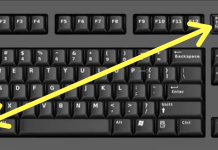A world existed at a time when there were no cell phones or vehicles. People had yet to discover them. It’s shocking how far we have come since then, making huge advancements in technology from one-dimensional points on a line to two dimensional flat planes which have length and breadth. There is also 3D- three dimensional, something which has length, breadth and depth. Our physical environment is 3D, and we move around in it every day. Now, 3D technology offers a wide range of possibilities in every walk of life and especially these days, in the entertainment sector.

Common Examples
We all might have experienced 3D technology in movie theatres with 3D glasses, though a pitfall being reduced image brightness. It was said to be difficult and expensive to use, but it has expanded its horizons to use in PC, architecture, industry, education and also for saving lives!
A little BackGround
3D technology can be traced all the way back to the new invention by David Brewster in 1844, Stereoscope, which could take 3D photographic images. In the 2000s, many big studio movies were released in 3D, using the latest HD video cameras like ‘Spy Kids 3D: Game over’. In the medical industry, 2D imaging techniques like MRI and CT scan, create pictures of the inside of the body which has improved the quality of healthcare by a lot. But despite all this, there is a chance of error. When an extra dimension is added, this error is reduced to almost nothing, and it makes everything closer to reality.
Important Articles:
How to make slime without Glue
Happy Wheels Unblocked Full Version
What is 3D printing and how does it work?
It is also known as additive manufacturing, and it is a process of making three dimensional solid objects, transforming virtual objects to reality! It starts with creating a 3D model with the help of computer-aided designs(CAD) package. A 3D printer uses plastic and also heated metal as ink to make the physical object. It is not limited to printing consumer toys and goods, but it can also contribute to medicine. Recently a child named Lucy Boucher was the first child to have a kidney transplant assisted by 3D technology. It involved transplanting a 35-year-old’s kidney into a four-year-old child.
Application of 3d printing
Using 3d tech, scientists can build organs for the human body using inkjet techniques. They just need to supply instructions, and raw materials and the 3d printer will do the rest of the work. Offering hope for those suffering from spine-related problems, surgeons from Medanta, Gurugram had implanted a 3D printed vertebrae in a 32-year-old woman, helping her walk again after suffering from spinal tuberculosis which involves the destruction of the intervertebral and collapse of spinal elements. “this is the first such surgery in India. These techniques have opened a new avenue wherein any complex reconstruction can be done in the spine”, said Dr V Anand Naik, Senior Consultant, Bone and Joint Institute at Medanta.
Many people die because of organ damage, and the availability of organ donors is less. Now with 3D printing, this problem can be rectified by printing out a vital organ immediately which is made to suit the patient’s requirements at a reduced cost. It also does away with issues like organ compatibility, blood group compatibility etc. Dentists, too, are embracing 3D printed goods like bite splints, crowns and night guards.
Getting a three-dimensional view of surgery makes it easier to correct the damage in a shorter time, and the whole surgery can be performed virtually. Broken bones are incredibly painful and who will bear the pain for a long time when with 3D technology, a needed structure can be built quite quickly. Scientists are taking medical imaging to new heights with 3D printing technology. First, they use MRI or CT scan to make an image of a particular patient’s organs and then make a dummy patient using those scans. The dummy can be used for research and analysed for different treatment procedures. It can be used to even treat cancer!
Professionals have always been trained using human anatomy models or dummies. Earlier these were made from wax. An alternative form would be using 3D human anatomy images. The advanced technology provides new ways of interaction resulting in a cost-efficient learning process. Imagine learning from a presentation with highly detailed anatomical cross-sections, and other life topics visually will certainly enlighten young minds.
Medicines treat so many diseases. But often, you’ll notice that so many have side effects along with it. What if we could design them in a way that they only work at the required site of action and not cause problems anywhere else?
How could that be?
With 3D technology, the medicine or drug’s effector sites are made more specific and precise so that they only affect the required area. It improves chemo therapy so that the chemicals only damage harmful tumours without interfering with the immunity of the patient. So cancer patients can say goodbye to hair fall!
Vehicle parts can be manufactured, produced and designed at a much better and faster rate. And how does this save lives? Well, of course, such vehicle parts can then be made better and safer avoiding accidents on the road and making riding vehicles a much safer task. Air travel can too become safer and cheaper.
Conclusion
So you see that 3D technology has a lot of potentials, even with a few certain pitfalls, in the coming years it can be improved and made better. There might be slight concern about the fact that 3D printed organs inside a body might affect it but these problems can be rectified too. We are advancing at a high rate, and soon we won’t be restricted to just 3D because there is also a fourth dimension- time. We still have to await and see what we can do with another dimension and further to come along the way!


























![Top 10 online jobs during Coronavirus Lockdown [2020] online jobs during coronavirus](https://www.virtualrealitybaba.com/wp-content/uploads/2020/04/online-jobs-during-coronavirus-218x150.jpg)
![Top 7 Expensive Sushi Places with a view [Los Angeles California] Noshi Sushi](https://www.virtualrealitybaba.com/wp-content/uploads/2022/01/Noshi-Sushi-100x70.jpeg)



